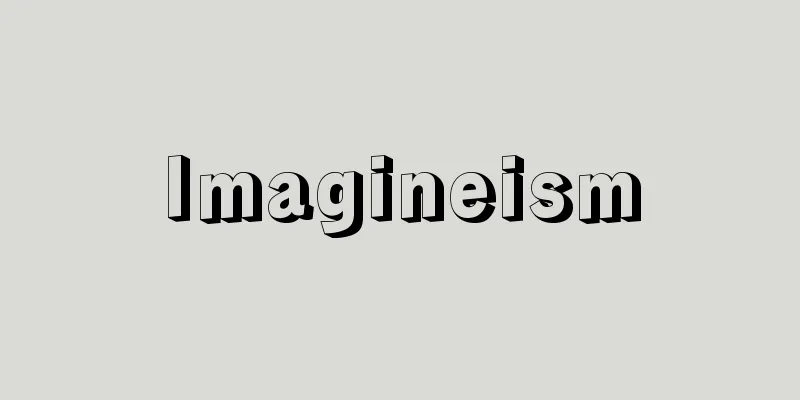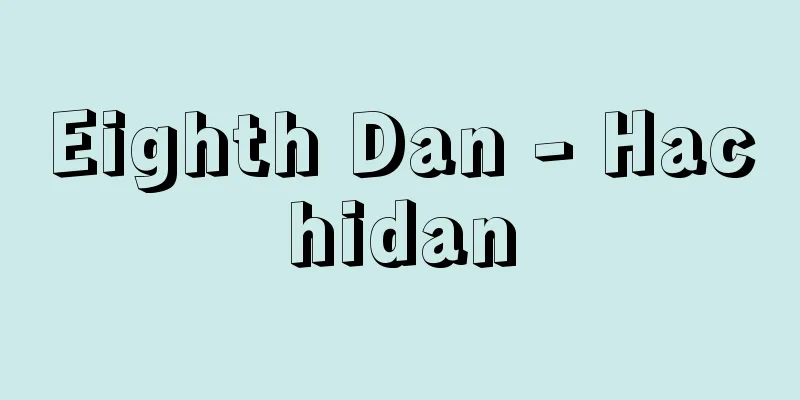Palace of Versailles - Versailles (English)

|
Versailles is a villa for the Bourbon royal family located about 20km southwest of Paris. It was built as the court of the Sun King Louis XIV and is a symbol of the French absolutist monarchy. For King Louis XIV, making his court luxurious and showing off his power and wealth both at home and abroad was of great political significance, but the Palace of Versailles was the overall embodiment of his bold intention to proclaim, "I am the state." The core of this structure is a hunting lodge that was built in 1626 at the command of Lemercier by his father, Louis XIII. Louis XIV first asked Louis Lebeau to add an wing to the core (1661). However, Lebeau died after completing the design of the facade facing the gardens, and the construction was taken over by Hardouin Mansart (1679). Following Roubaud's design, the wings were extended to the left and right, and the entire interior and exterior construction was not completed until the reign of Louis-Philippe (1830-48). The front facing the garden is of classical design, but the central and both ends are accented by colonnades that jut out slightly forward, and the upper ends are lined with stone sculptures that create a Baroque twist. The centre of the building is occupied by the famous Hall of Mirrors, and at either end are the Room of War and the Room of Peace. The Hall of Mirrors, used for deliberations on state affairs, was designed by Mansart and decorated by Le Brun. The Baroque-style wall decorations, which make extensive use of gold paint, are powerfully segmented by single-sided columns with a classical motif, supporting a long cylindrical vault. Measuring 550 metres in length and said to accommodate 10,000 people, the Palace of Versailles is reminiscent of the stage setting for court life centered around the king. The gardens designed by Le Nôtre were so closely related to the palace that they could be considered a spatial extension of the palace. With their numerous ponds decorated with groups of statues and buildings such as Louis XIV's Grand Trianon (1688-91), Louis XV's Petit Trianon (1761-68), and Marie Antoinette's Hameau (Little Village, 1782-86), the gardens convey to the present day the magnificent stylized beauty of the Louis dynasty against the backdrop of their natural surroundings. Today, apart from the central part of the palace, the chapel, and the theater, the north and south wings are home to a wealth of art exhibits, and the palace and gardens are open to the public as a historical art museum. In 1979, both the palace and the gardens were registered as cultural heritage sites of the World Heritage Sites (World Cultural Heritage). [Katsuya Hamatani] A large garden that spreads out behind the palace. It is a French-style garden based on symmetry, with ponds and fountains, and was passed down around the world as the best example of European gardens at the time. It was designed by the landscape architect Le Nôtre. Part of the World Heritage Site "Palace and Gardens of Versailles" (France, 1979, registered in 2007) Versailles, France ©Masashi Tanaka "> Versailles Palace Gardens The gardens designed by Le Notre are closely related to the palace architecture, and many ponds decorated with groups of statues are arranged. Part of the World Heritage "Palace and Gardens of Versailles" (France, 1979, registered in 2007) Versailles, France ©Masashi Tanaka "> Neptune's Fountain A villa built by Louis XIV in the gardens of the Palace of Versailles. It was designed and remodeled by the architect Mansart. The Trianon is a building where kings could spend their private time. It is also called the Grand Trianon. Part of the World Heritage Site "Palace and Gardens of Versailles" (France, 1979, registered in 2007) Versailles, France ©Masashi Tanaka "> The Grand Trianon Designed by Richard Mik at Marie Antoinette's request. Rustic houses, water mills and other buildings remain on the grounds surrounded by greenery within the Palace of Versailles. Marie Antoinette's house is on the right in the photo. Part of the World Heritage Site "Palace and Gardens of Versailles" (France, 1979, registered in 2007) Versailles, France ©Masashi Tanaka "> Hameau (Queen's Village) Source: Shogakukan Encyclopedia Nipponica About Encyclopedia Nipponica Information | Legend |
|
パリの南西およそ20キロメートルのベルサイユにあるブルボン王家の離宮。太陽王ルイ14世の宮廷として造営されたフランスの絶対主義王制を象徴する建造物。フランス国王ルイ14世にとり、宮廷を豪華に装い、権力・財力を内外に誇示することは政治的にも重要な意味をもつものであったが、「われは国家なり」と豪語した彼の雄渾(ゆうこん)な意図が総合的に具現されたのがベルサイユ宮殿であった。この建造物の中核をなしているのは、父王ルイ13世がルメルシエに命じて1626年に建立させた狩猟用別荘である。ルイ14世はまずこの中核部に連なる翼屋(よくおく)の増築をルイ・ルボーに求めた(1661)。しかし、庭園に面した正面の設計を終えただけでルボーは死去し、工事はアルドゥアン・マンサールに引き継がれた(1679)。ルボーの設計を踏襲しながら翼屋が左右に拡張され、内外部の工事がすべて完了するのはルイ・フィリップの治世(1830~48)になってからである。 庭園側の正面は古典的デザインで構成されるが、中央部と両端部はやや前方に張り出した列柱で外観にアクセントを与え、上端部には石材彫刻を並べてバロック的な曲折をみせる。屋内の中心部は有名な「鏡の間」で占められ、その両端には「戦争の間」と「平和の間」が配される。国政の審議に使われた「鏡の間」はマンサールが設計し、ルブランが装飾にあたった。金泥を多く用いたバロック風の壁面装飾を古典的モチーフの片蓋(かたぶた)柱が力強く分節し、長大な円筒穹窿(きゅうりゅう)を支えている。全長550メートル、1万人を収容するといわれるベルサイユ宮殿は、国王を中心とする宮廷生活の舞台装置を思わせる。ル・ノートルの設計になる庭園は宮殿の空間的延長といえるほどに、この建築と密接に関連しており、群像で装われた多くの池泉やルイ14世の大トリアノン(1688~91)、ルイ15世の小トリアノン(1761~68)、マリ・アントアネットのアモー(小村落、1782~86)などの建築が、自然の環境を背景にして、ルイ王朝の華麗な様式美を今日に伝えている。 今日では、宮殿中央部、礼拝堂、劇場などを除いて、南北両翼部には豊富な美術品が展示され、庭園ともども歴史美術館として一般に公開されている。1979年に宮殿、庭園ともに世界遺産の文化遺産として登録されている(世界文化遺産)。 [濱谷勝也] 宮殿の後方に広がる大庭園。左右対称を基本に、池や泉水を配置したフランス式庭園で、当時ヨーロッパ庭園の最高の範例として各国に伝わった。設計は造園家ル・ノートルによる。世界文化遺産「ベルサイユの宮殿と庭園」の一部(フランス・1979、2007年登録) フランス ベルサイユ©Masashi Tanaka"> ベルサイユ宮殿庭園 ル・ノートルの設計による庭園は宮殿建築と密接に関連しており、群像で装われた多くの池泉が配置されている。世界文化遺産「ベルサイユの宮殿と庭園」の一部(フランス・1979、2007年登録) フランス ベルサイユ©Masashi Tanaka"> ネプチューンの泉水 ベルサイユ宮殿の庭園に建つルイ14世の離宮。建築家マンサールにより設計・改築された。トリアノンとは、国王たちが私的な時間を過ごすための建物である。グラン・トリアノンともいう。世界文化遺産「ベルサイユの宮殿と庭園」の一部(フランス・1979、2007年登録) フランス ベルサイユ©Masashi Tanaka"> 大トリアノン マリ・アントアネットの希望で、リシャール・ミクが設計。ベルサイユ宮殿内の緑に囲まれた敷地に、田舎風の家屋、水車小屋などの建物が残る。写真右がマリ・アントアネットの家。世界文化遺産「ベルサイユの宮殿と庭園」の一部(フランス・1979、2007年登録) フランス ベルサイユ©Masashi Tanaka"> アモー(王妃の村落) 出典 小学館 日本大百科全書(ニッポニカ)日本大百科全書(ニッポニカ)について 情報 | 凡例 |
>>: Versailles - Versailles (English spelling)
Recommend
Konoe Taneie
Year of death: July 10, 1566 (July 26, 1566) Year ...
Eyespot - Ganten
It is found in the protozoan flagellates, lower i...
Goby (Sagayu) - Goby (English spelling)
A general term for fish belonging to the Gobiidae ...
Itsukaichi Kaido - Itsukaichi Kaido
A road in the west of Tokyo that branches off from...
Weasel (badger) - Weasel
Another name for the raccoon dog of the Canidae fa...
Oshikuramanju
A type of children's game. Depending on the re...
Langkasuka (English spelling)
An ancient kingdom that existed in the northern pa...
Yoshino Sakuzo
Political scientist. Theoretical leader of Taisho...
Shoulder - Shoulder
A general term for cloth, knitted fabrics, and fu...
Polyterpene
…Terpenes with n 3 or more are also known in natu...
Motel - motel (English spelling)
A type of lodging facility that originated in the...
Esutori - Esutori
A city on the west coast of South Sakhalin, facin...
Ofuna [town] - Ofunamachi
...Visiting the historical sites and temples of K...
theca
…The ascosacs usually gather together in large nu...
Child, FJ (English spelling) ChildFJ
…In the Elizabethan era, it was common to print a...









